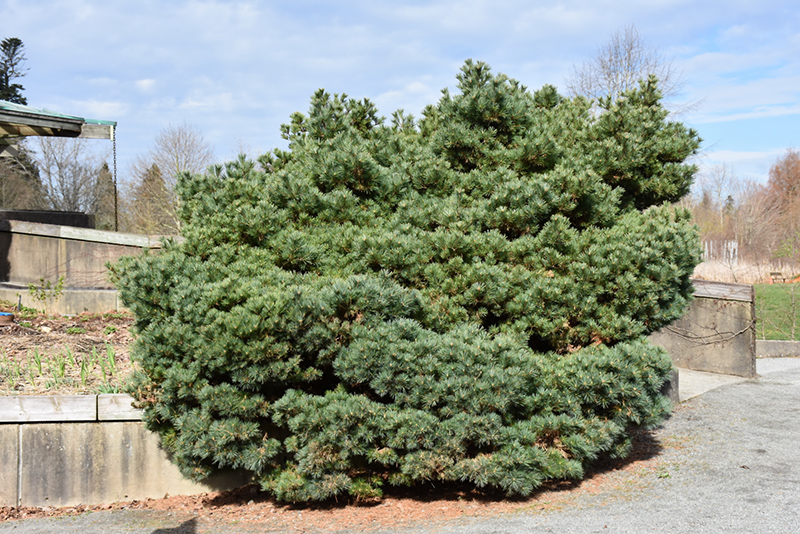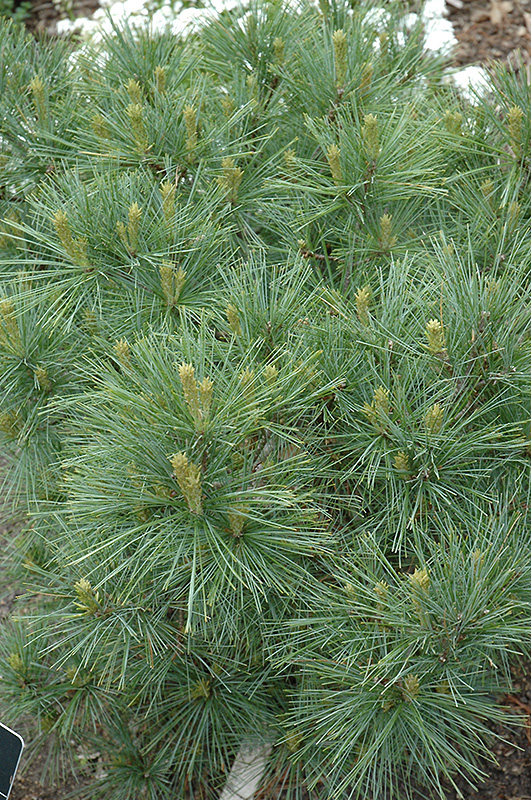Pine, Blue Shag White Pinus strobus 'Blue Shag' Height: 6 feet Spread: 6 feet
Sunlight:
Hardiness Zone: 3a Other Names: Eastern White Pine Description: A beautiful new evergreen garden shrub with a dense, mounded habit of growth and dusty blue needles; very compact and slow growing, excellent for form, texture and color detail in home gardens or for rock gardens; Ornamental Features Pine, Blue Shag White is a dwarf conifer which is primarily valued in the landscape or garden for its ornamental globe-shaped form. It has attractive bluish-green evergreen foliage. The needles are highly ornamental and remain bluish-green throughout the winter. Landscape Attributes Pine, Blue Shag White is a dense multi-stemmed evergreen shrub with a more or less rounded form. Its relatively fine texture sets it apart from other landscape plants with less refined foliage. This shrub will require occasional maintenance and upkeep. When pruning is necessary, it is recommended to only trim back the new growth of the current season, other than to remove any dieback. Gardeners should be aware of the following characteristic(s) that may warrant special consideration; Pine, Blue Shag White is recommended for the following landscape applications; Planting & Growing Pine, Blue Shag White will grow to be about 6 feet tall at maturity, with a spread of 6 feet. It tends to fill out right to the ground and therefore doesn't necessarily require facer plants in front, and is suitable for planting under power lines. It grows at a slow rate, and under ideal conditions can be expected to live for 50 years or more. This shrub does best in full sun to partial shade. It does best in average to evenly moist conditions, but will not tolerate standing water. This plant should be periodically fertilized throughout the active growing season with a specially-formulated acidic fertilizer. It is not particular as to soil type, but has a definite preference for acidic soils. It is quite intolerant of urban pollution, therefore inner city or urban streetside plantings are best avoided. This is a selection of a native North American species. Special Attributes Evergreens need to be watered during the winter. Our desert climate especially in late winter to early spring evergreens can suffer during next growing season. An easy way to remember check for dryness on the holidays Halloween, Thanksgiving, New Year's Day, Valentines Day & Easter.![]()
![]()
![]()
![]()
![]()
![]()
![]()
![]()
![]()
![]()
![]()
![]()


